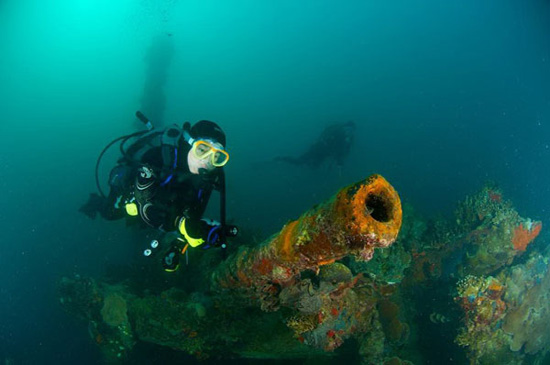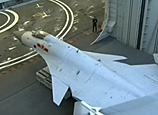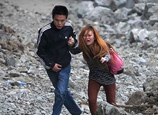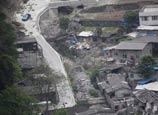
 |
| A diver explores a sunken wreck of World War II in the Republic of Palau. (China Daily/Yao Yi) |
While an increasing number of Chinese start to don a wetsuit and plunge into the depths of the ocean, their wish to record images of crystalline seas, magnificent coral reefs or rainbows of tropical fish has driven them to pick up cameras and become underwater photographer.
And they have discovered more than just the beauty they have desired.
"It's the magic of underwater photography that drives scuba divers to pick up the camera and makes photographers want to learn how to dive," says Cao Feng, 48, an amateur photographer.
The Shanghai native spent eight years photographing dry land before learning how to dive in 2011 to take photographs. "Now I can go as deep as 40 meters and I have already received my certificate for open-water diving," says Cao, explaining that there are deep-dive diplomas, dry-suit certificates, testimonials for wreck diving and citations for underwater photography.
Once a keen photographer of birds, Cao says an underwater photo exhibition shifted his view from high in the sky to the depths of the ocean.
"The biggest difference (between shooting on land and underwater) is the light - you will easily think about choosing the camera with high sensitivity or adjusting the aperture if there isn't enough light when taking photos on land, but it's a completely different story to shoot under water - white (objects) appear bluish and red (objects) appear dark or even black as sunlight is absorbed as depth increases," says Cao, explaining that even to the naked eye, everything underwater is blue or green in color. He says the solution lies in underwater photographic equipment.
"No photographer on the ground needs to learn how to solve the problem of buoyancy while talking a photo, but it's a must for anybody underwater," he says, adding that apart from wearing weighting belts made of lead and adjusting the amount of air in the buoyancy control device, one also needs to control breathing when diving.

















 Giant pandas safe in quake-hit zone
Giant pandas safe in quake-hit zone


![]()
